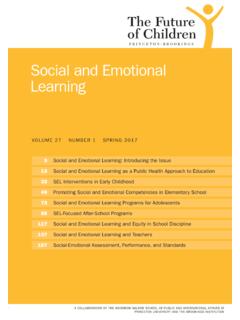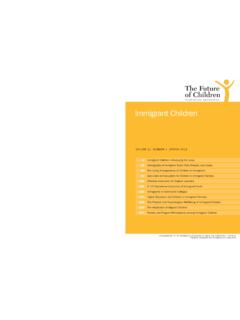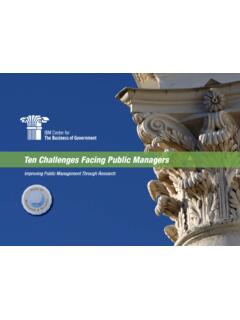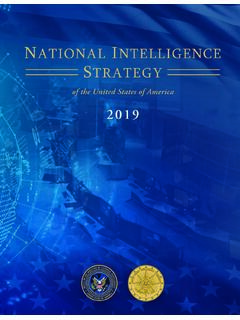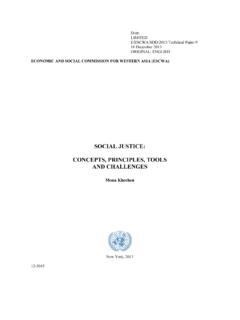Transcription of Literacy Challenges for the Twenty-First Century
1 Literacy t u r e o f ch i l d r e n . o r g The Future of Children Literacy Challenges for the Twenty-First Century VO L U M E 2 2 N U M BE R 2 FA L L 2 0 1 2. 3 Literacy Challenges for the Twenty-First Century : Introducing the Issue 17 Patterns of Literacy among Students 39 The Role of Out-of-School Factors in the Literacy Problem 55 Improving Reading in the Primary Grades 73 Reading and Reading Instruction for Children from Low-Income and Non-English-Speaking Households Volume 22 Number 2 Fall 2012. 89 Adolescent Literacy : Learning and Understanding Content 117 The Importance of Infrastructure Development to High-Quality Literacy Instruction 139 Technology Tools to Support Reading in the Digital Age A COLLABORATION OF THE WOODROW WILSON SCHOOL OF PUBLIC AND INTERNATIONAL AFFAIRS AT A COLLABORATION OF THE WOODROW WILSON SCHOOL OF PUBLIC AND INTERNATIONAL AFFAIRS AT.
2 PRINCETON UNIVERSITY AND THE BROOKINGS INSTITUTION PRINCETON UNIVERSITY AND THE BROOKINGS INSTITUTION. The Future of Children seeks to translate high-level research into information that is useful Board of Advisors to policy makers, practitioners, and the media. Lawrence Balter Charles N. Kahn III. The Future of Children is a collaboration of the Woodrow Wilson School of Public and New York University Federation of American Hospitals International Affairs at Princeton University and the Brookings Institution. Jeanne Brooks-Gunn Marguerite Kondracke Columbia University America's Promise The Alliance for Youth Senior Editorial Staff Journal Staff Judith Feder Rebecca Maynard Georgetown University University of Pennsylvania Sara McLanahan Kris McDonald Editor-in-Chief Associate Editor William Galston Lynn Thoman Princeton University Princeton University Brookings Institution Corporate Perspectives Director, Center for Research on University of Maryland Child Wellbeing, and William S.
3 Tod Lauren Moore Heather B. Weiss Professor of Sociology and Public Affairs Project Manager Jean B. Grossman Harvard University Princeton University Princeton University Janet M. Currie Amy Wilkins Senior Editor Brenda Szittya Kay S. Hymowitz Education Reform Now Princeton University Managing Editor Manhattan Institute for Policy Research Director, Center for Health and Wellbeing, Princeton University and Henry Putnam Professor of Economics Martha Gottron and Public Affairs Managing Editor Ron Haskins Princeton University Senior Editor Lisa Markman-Pithers Brookings Institution Outreach Director Senior Fellow and Co-Director, Center on Princeton University Children and Families Reid Quade Cecilia Rouse Outreach Coordinator Senior Editor Brookings Institution Princeton University Director, Education Research Section.
4 Regina Leidy and Katzman-Ernst Professor in the Communications Coordinator Economics of Education and Professor of Princeton University Economics and Public Affairs The views expressed in this publication do not necessarily represent the views of the Woodrow Tracy Merone Isabel Sawhill Administrator Wilson School at Princeton University or the Brookings Institution. Senior Editor Princeton University Brookings Institution Copyright 2012 by The Trustees of Princeton University Senior Fellow, Cabot Family Chair, and Co-Director, Center on Children and Families This work is licensed under the Creative Commons Attribution-NoDerivs Unported License, Authorization to reproduce articles is allowed with proper attribution: From The Future of Children, a collaboration of the The Future of Children would like to thank The Annie E.
5 Casey Foundation and the David and Woodrow Wilson School of Public and International Affairs at Princeton University and the Lucile Packard Foundation for their generous support. Brookings Institution.. To purchase a print copy, access free electronic copies, or sign up for our e-newsletter, go to ISSN: 1054-8289 our website, If you would like additional information about the ISBN: 978-0-9814705-9-7 journal, please send questions to VOLUME 22 N UMBER 2 FAL L 2012. Literacy Challenges for the Twenty-First Century 3 Literacy Challenges for the Twenty-First Century : Introducing the Issue by Richard Murnane, Isabel Sawhill, and Catherine Snow 17 Patterns of Literacy among Students by Sean F.
6 Reardon, Rachel A. Valentino, and Kenneth A. Shores 39 The Role of Out-of-School Factors in the Literacy Problem by Jane Waldfogel 55 Improving Reading in the Primary Grades by Nell K. Duke and Meghan K. Block 73 Reading and Reading Instruction for Children from Low-Income and Non-English-Speaking Households by Nonie K. Lesaux 89 Adolescent Literacy : Learning and Understanding Content by Susan R. Goldman 117 The Importance of Infrastructure Development to High-Quality Literacy Instruction by David K. Cohen and Monica P. Bhatt 139 Technology Tools to Support Reading in the Digital Age by Gina Biancarosa and Gina G. Griffiths Literacy Challenges for the Twenty-First Century : Introducing the Issue Literacy Challenges for the Twenty-First Century : Introducing the Issue Richard Murnane, Isabel Sawhill, and Catherine Snow A.
7 Dvanced Literacy is a This issue of the Future of Children prerequisite to adult success explores the Literacy of America's children in the Twenty-First Century . and how to improve it. We begin this intro- By advanced Literacy we do ductory essay by reviewing briefly why Literacy not mean simply the ability is so important in today's world and why the to decode words or read a text, as necessary concept of Literacy needs to be broadened as these elementary skills are. Instead we to include a set of competencies that go well mean the ability to use reading to gain access beyond the ability to recognize words and to the world of knowledge, to synthesize decode text.
8 We end with a summary of the information from different sources, to other articles in the issue and briefly consider evaluate arguments, and to learn totally new what steps policy makers might take to subjects. These higher-level skills are now respond to the urgent needs we cite. essential to young Americans who wish to explore fields as disparate as history, science, The Growing Demand for and mathematics; to succeed in postsecondary Strong Literacy Skills education, whether vocational or academic; to The Literacy problem we address here is earn a decent living in the knowledge-based not that Literacy has declined among recent globalized labor market; and to participate in generations of children.
9 It is that today's a democracy facing complex problems. economy and the complex political and social Challenges facing the nation demand more The Literacy challenge confronting children, advanced skills than ever before. their families, and schools in the United States has two parts. The first is the universal The average reading skill of non-Hispanic need to better prepare students for twenty- white children from recent cohorts is first- Century Literacy demands. The second remarkably similar to that of comparable is the specific need to reduce the disparities children born in the 1960s, and the average in Literacy outcomes between children from reading achievement of recent cohorts of disadvantaged backgrounds and those from black children and Hispanic children is more privileged homes.
10 Considerably higher than that of comparable Richard Murnane is the Thompson Professor of Education and Society at the Harvard Graduate School of Education; Isabel Sawhill is a senior fellow, Cabot Family Chair, and co-director of the Center on Children and Families, at the Brookings Institution; Catherine Snow is the Patricia Albjerg Graham Professor of Education at the Harvard Graduate School of Education. VOL. 22 / NO. 2 / FALL 2012 3. Richard Murnane, Isabel Sawhill, and Catherine Snow Figure 1. National Assessment of Educational Progress Test Score Trends in Reading: National Averages for Thirteen-Year-Olds (Eighth Grade). 280. White 270. Black 260 Latino 250.
